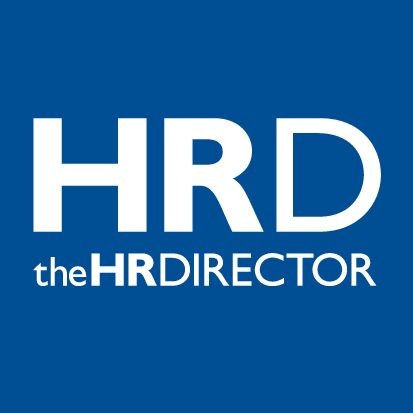The benefits of getting wellbeing in the workplace right include increased return on investment (ROI), fewer health and safety incidents, more engaged employees, higher productivity and the ability to retain talent. Your employees are happier, and so are your stakeholders. Engaged employees and a better bottom line – that’s a real win-win.
Wellbeing myths:
Let’s look at three myths about wellbeing, debunk them and explain what you can do to overcome them.
Myth 1: We can wait to take action
It’s understandable that you’d think this; many have thought it before, but this is part of the problem. The pandemic caused so much uncertainty that people stopped looking for new jobs. Vacancies fell across the board. Enter the Great Retention. We’ve been waiting to return to ‘normal’ in our journey into a post-pandemic world.
The work-from-home revolution was born. Many employees discovered a better work–life balance. Hybrid and flexible working may have begun as temporary solutions, but they became deeply rooted and are now employee expectations.
The world of work is different. In the UK, 62% say that hybrid is their preferred future way of working. It is clear that employees overwhelmingly want to hold on to that balance. The picture is similar globally – 51% of employees are working mainly or entirely remotely, with 59% saying that twelve months from now they would prefer to be still working that way.
Many organisations struggled to reimpose pre-pandemic working models. Organisations that tried to force a return to the old ways started losing their talent. Enter the Great Resignation – and it’s set to stay. We now live in a world of hybrid working. Innovate, step up and engage with your people, or get left behind.
Almost one in five UK workers say that they are very or extremely likely to migrate to a new employer within the next twelve months, with millennials (those born 1981–1996) and Generation Z (1997 onward) being the employees the most likely to instigate change.
Highly skilled workers are in demand. Employees will leave if their expectations are not being met. Can you afford to be complacent and have your talent migrate to a competitor?
Myth 1 debunked. We cannot wait. If we don’t act now, we risk losing our talent.
Myth 2: Wellbeing programmes do not deliver business value
This thinking used to be commonplace, but now it is out of date. Wellbeing programmes are a powerful tool, but they fail if they’re not implemented and appropriately communicated. It pays to get it right the first time.
Embrace your wellbeing strategy. It needs a purpose, a framework and strong branding. Communicate it regularly and in a way that connects with a diverse workforce. In time, your strategy can make your people healthier, happier, more productive and resilient, which is reflected in reduced absenteeism and presenteeism.
The business value wellbeing can drive is considerable. A successful strategy might include the following elements:
Return on investment
- ROI is measured financially from data that is usually readily available, eg medical claims, disability and absenteeism data. Only 9% of employers currently measure the ROI of wellbeing programmes. This may explain why employers are not allocating adequate budgets or resources to employee wellbeing.
- Mental health is a significant component of wellbeing. Figures for 2020–21 show that for every £1 invested in mental health interventions, there is a return of £5.30 from reduced costs associated with absenteeism, presenteeism and staff turnover. Surely a 430% return on invested capital is appealing. This is a huge business opportunity. If you’re not harnessing wellbeing, you’re leaving money on the table.
Value on investment
- VOI outcomes are more difficult to measure accurately. They’re intangible assets, but they significantly contribute to organisational success. They’re not measured financially – they are about employee experience.
- Acquiring data for VOI requires effort and expense, such as employee engagement surveys and collecting metrics on productivity, motivation, team effectiveness and reasons for employees joining or leaving.
- In the long run, VOI is more important than ROI. Regardless of whether ROI and VOI are important to you right now, if you consider wellbeing a contributor to your bottom line, why wait to make improvements?
- Once you have an effective programme, you’re unlikely to be concerned about the ROI, as the benefits come from organisational culture and productivity improvements – the VOI.
Employee value proposition
- EVP is the unique set of benefits an employee receives in return for the skills, capabilities and experience they bring to an organisation. An EVP is about defining the essence of your organisation, how it is unique and what it stands for.
- According to AON, only 28% of employees have a clear EVP.
Of those that do, 85% believe it positively impacts employee engagement, and 72% believe it positively impacts retention. This goes hand in hand with wellbeing.
Myth 2 debunked. Wellbeing creates value.
Myth 3: We’re already doing wellbeing well
Are you really doing wellbeing well? Answer these ten questions:
- Do you have a comprehensive wellbeing programme that is thoroughly embedded? It’s worth taking time to get to know your employees and what they need to be well, stay well and perform well.
- Are your wellbeing strategy and programme fit for purpose? One size does not fit all. Have you adapted your strategy to meet the differing needs of the five generations currently in the workforce?
- Do you have board sponsorship for your wellbeing strategy? It is critical that wellbeing is high on the corporate agenda, with an equivalent profile to your health and safety and HR strategies.
- Do your leaders have the right mindset? Your leaders must be developed so they can believe in, model and live this new way of thinking.
- Do you involve your workforce and other stakeholders in your wellbeing programme offering? Do you know what they want? Almost a third of employers do not consult with their employees to understand their needs.
- Do you have a two-tiered workforce? We now have some employees who can take advantage of hybrid or remote working, which improves their wellbeing. What about the 45% of workers who have to go to an office, a hospital or a restaurant every day? They may have had to go into their physical workplace every day of the pandemic. These cohorts might require different wellbeing support.
- Do you have a strategy to support the wellbeing of those who permanently work remotely? Human connections are vital. We are social creatures. It’s important to factor in loneliness and mental health challenges stemming from isolation.
- Do you have a comprehensive communications and engagement plan to promote and embed wellbeing? You must take all your people along with you. You can’t pay lip service to this. Thinking that just some of you can buy into this philosophy is a mistake. Culture change involves everyone.
- Do you say, ‘We have an employee assistance programme that employees can contact if they have an issue’? That is not enough. Only 6% of employees use this programme each year. You’ve got to do more. Your competitors are doing more – 77% of employers have a formalised health and wellbeing strategy or will within the next twelve to eighteen months.
- Where does accountability and governance for wellbeing sit in your organisation? Wellbeing, health and safety are covered under your duty of care as an employer and touch all parts of your organisation. Ownership and accountability are often fragmented. Embedding the right wellbeing, health and safety culture is the responsibility of all. Modern organisations should be integrating their wellbeing, health and safety services so that governance, accountability and day-to-day operations are clear.
Myth 3 debunked: If you’ve answered no to any of these questions, you must reconsider your wellbeing strategy and programmes.
Your wellbeing, health and safety strategies are paramount to success. Overcoming the three myths I have described will serve your organisation for many years to come. You are a disruptor, and you need to act. You can create lasting business value by investing in wellbeing.
This is an extract from Success Secrets of Disruptors by Sarah Piddington







